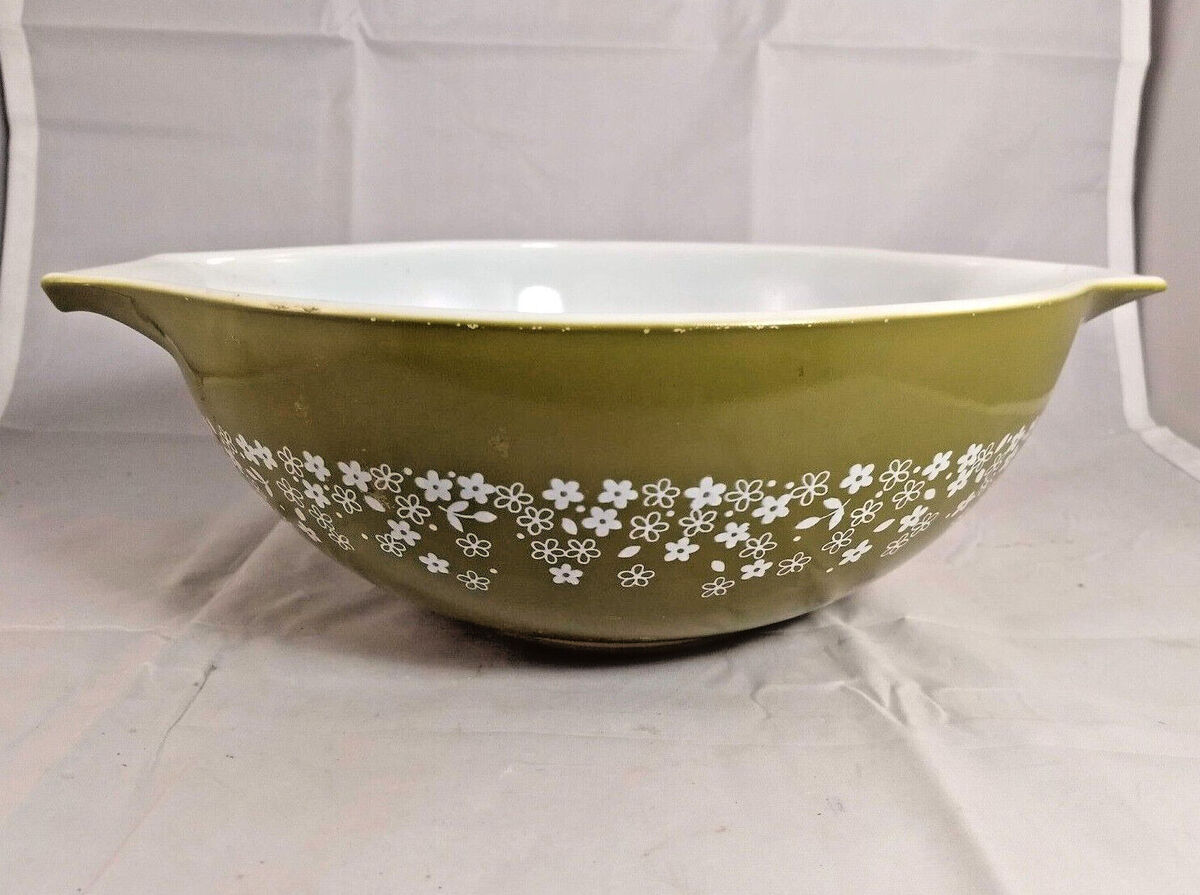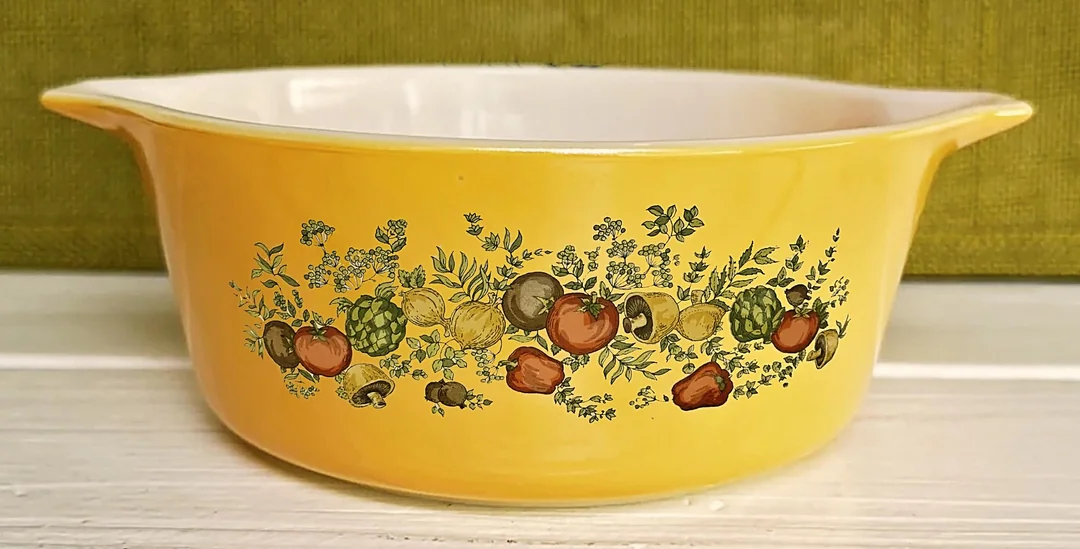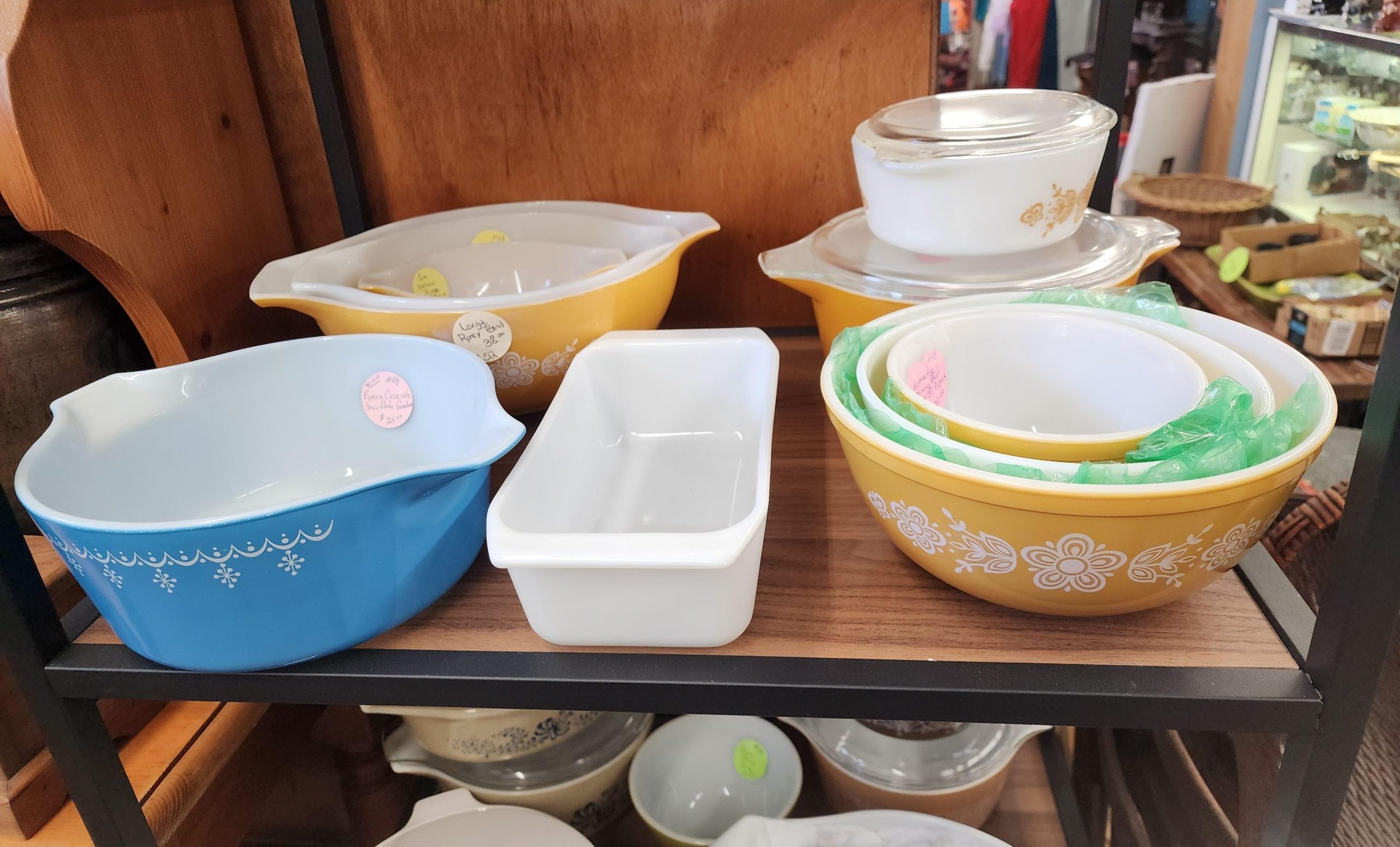This Rare Pyrex Dish in Your Kitchen Could be Worth a Fortune
Collectors of vintage kitchenware are paying surprising amounts for glass dishes once sold in everyday department stores. Pyrex, a brand that began in the early 1900s, produced hundreds of patterns, but a few stand apart for their rarity and desirability.
One in particular, the Golden Sunflower Daisy line, has captured the attention of buyers for its bold hues and limited production years. Consequently, items that once cost only a few dollars now sell for thousands when found in excellent condition. If you own an old Pyrex casserole or mixing bowl, it might deserve a second look.
The Daisy Pattern and Its Origins

Photo credit: Ebay
The Golden Sunflower Daisy collection launched in 1968 and remained in production until 1973. Cynthia S. Gerow, a designer working with Pyrex at the time, developed the decoration. The line featured orange and yellow daisy motifs arranged across lids, bowls, and casserole dishes. Some items included woven wicker baskets made to hold the glassware securely, and turned the set into a distinctive promotional series.
These dishes were marketed as affordable kitchen staples, typically selling for around five or six dollars. Because they were part of a promotional collection, fewer were produced than standard Pyrex graphics, which gives rise to today’s collector interest.
The short production span, combined with the cheerful yet unmistakable detailing, means complete sets are far less common in thrift shops and estate sales. Spotting an original Daisy dish requires paying attention to the striking color palette and flower decorations, which are unlike any other Pyrex style released during that period.
Current Value in Collector Markets

Photo credit: Reddit
Vintage Pyrex generally rises in price based on rarity, condition, and whether the piece still includes its original lid. The Daisy line demonstrates this perfectly. Reports show two casserole dishes from the 471 and 473 series have sold for more than $5,000 on eBay. Those examples were complete, with lids and minimal signs of wear. Dishes missing covers or showing scratches sell for less, though they still attract interest.
Collectors emphasize brightness of color, clarity of the pattern, and shine of the finish when evaluating value. Dishwasher use has dulled many vintage dishes over time, so hand-washed pieces command stronger bids. Smaller sales usually reach into the hundreds, particularly for less common items like the pixie casserole line or complete baking sets.
Even with price differences across condition levels, Daisy remains among the designs that can transform a $5 garage sale find into a far more significant discovery in today’s resale market.
Identifying Authentic Daisy Pieces

Photo credit: Reddit
Spotting a genuine Daisy item involves several details. Vintage Pyrex always features the brand name in uppercase lettering stamped on the base. For Daisy, glassware aficionados tend to check design placement and backstamps to confirm production dates. The Cinderella mixing bowls in numbers 442 through 444 show the artwork across the bowl’s exterior. Oval casserole dishes in sizes 043 and 045 often included daisy-decorated tops, sometimes paired with a wicker basket.
Smaller “pixie” casseroles, identified with numbers ranging from 700 to 739, carried the artwork on compact oven-to-table dishes. Another variation was the three-piece baking set, listed in the 330 range, which carried the same bold motifs.
Enthusiasts sometimes consult the Corning Museum of Glass Pyrex Pattern Library to cross-reference details and ensure authenticity. Because the Daisy line ended in 1973, cookware in good condition represent both a collectible kitchen artifact and a slice of mid-20th century design history, which make careful identification worth the effort.